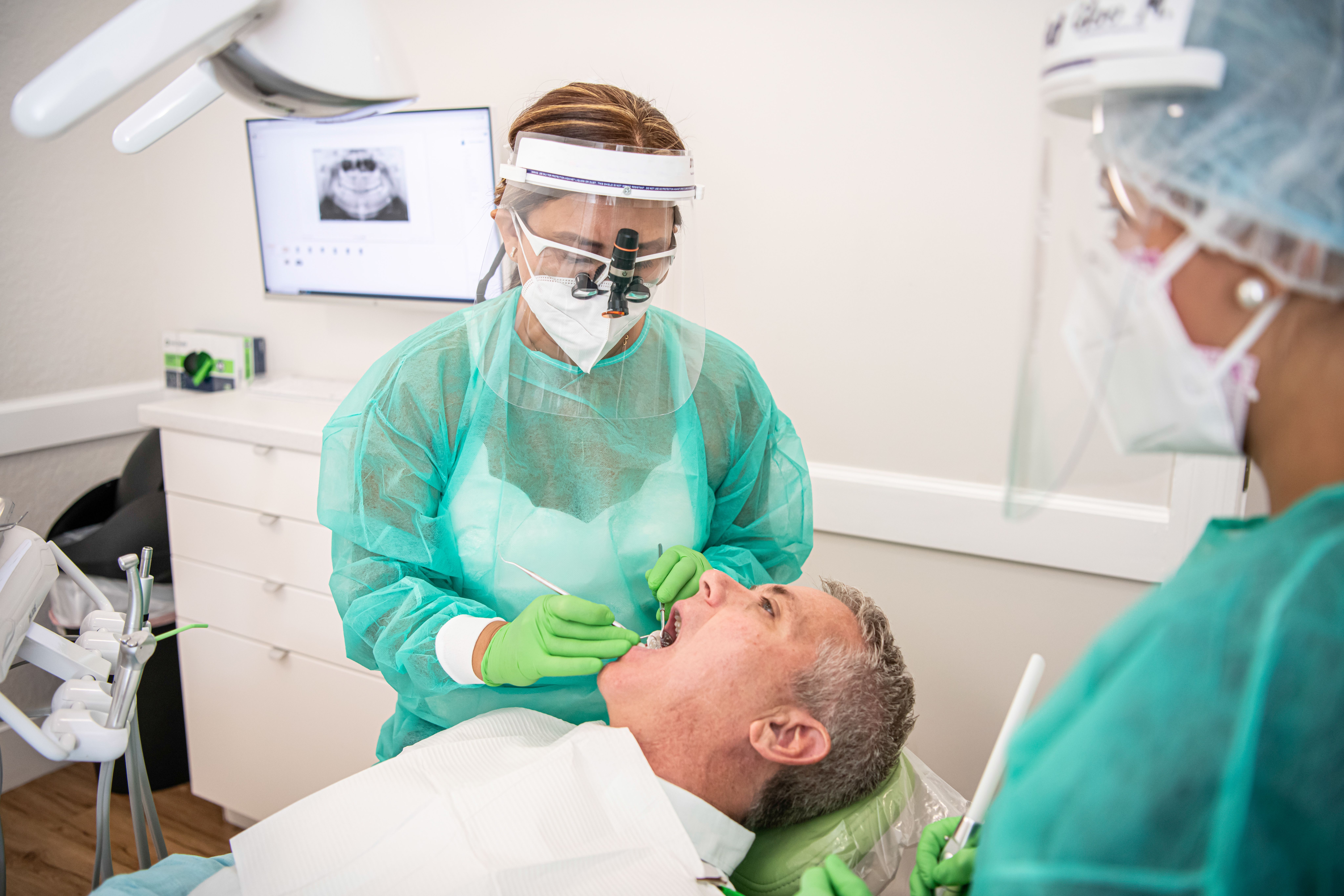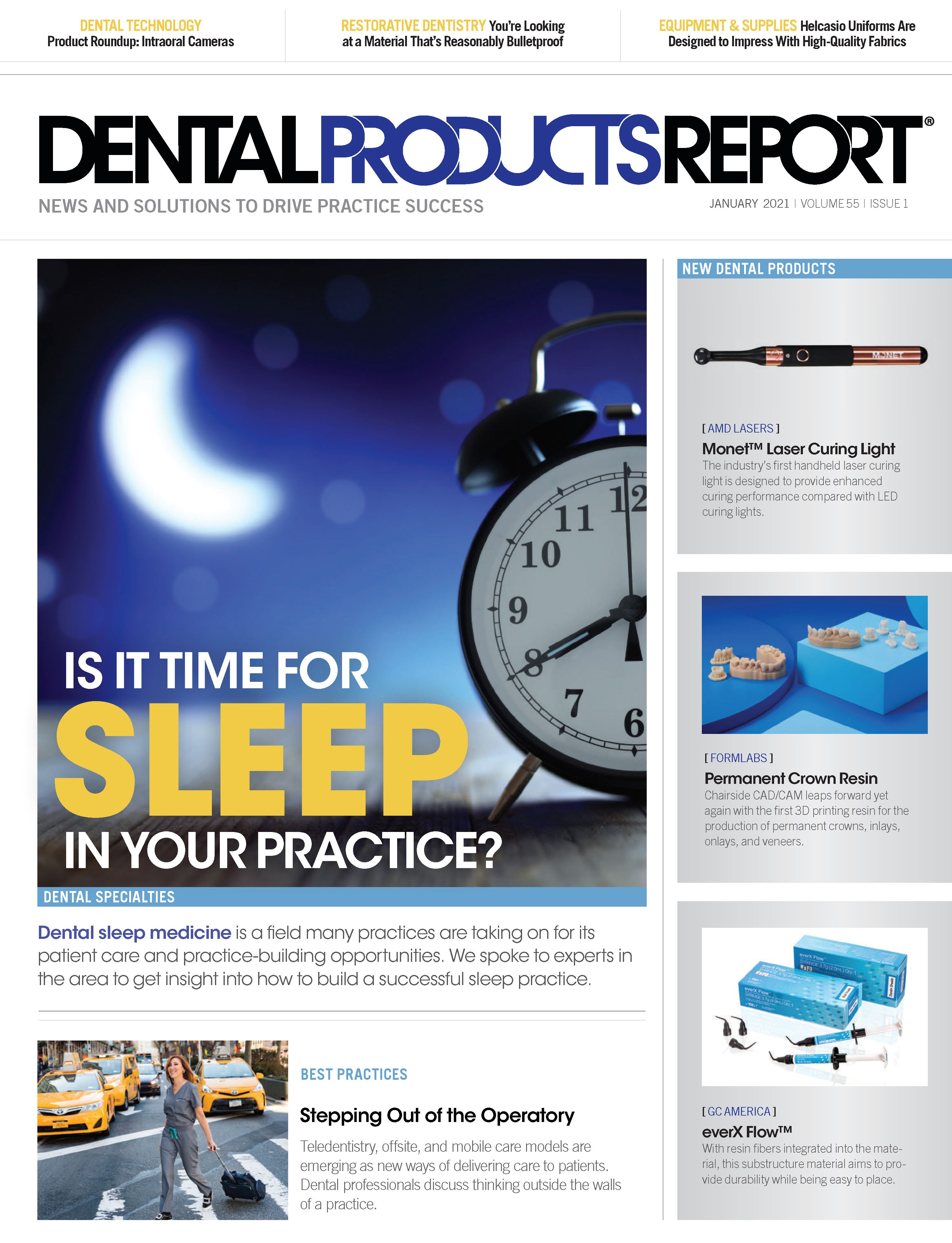COVID-19 infection control takeaways
Even after the pandemic ends, these products and processes should stick around.
© Matea Michelangeli/Adobe Stock

No one wants to relive 2020. The pandemic has taken an immeasurable toll on dental practices, from both personal and professional perspectives. However, despite all of the bad stuff, dental practices have new products and processes that should remain in place going forward even after the coronavirus disease 2019 (COVID-19) pandemic ends.
Leading the pack
Dental health care professionals should take pride in the fact that no one has been reported to have contracted COVID-19 through a dental practice, and that’s largely due to infection control precautions initiated 30 years ago.
“Dentistry is doing pretty well right now,” says Shannon Mills, DDS, a private health care consultant based in Concord, New Hampshire and chair of the American Dental Association’s Standards Committee on Dental Products (SCDP) Subcommittee on Dental Infection Control Products. “We don’t have any documented patient-to-health-care-worker or health-care-worker-to-patient transmissions of COVID-19 that have been reported,” Mills says. “We are doing things right, because we got things right back in the 1990s, back when we instituted [Occupational Safety and Health Administration’s (OSHA)] bloodborne pathogens standard. And what we did there is the 90% solution for COVID-19.”
Mills recommends that practices remain vigilant in the execution of their infection control protocols. However, there are still opportunities for improvement.
“[We need to] work on reducing aerosols in the environment, and then controlling the ones that we do generate,” Mills says. “But if you don’t have to create an aerosol, then don’t create one. That’s the first solution, that’s an engineering control, as opposed to a work practice control. The work practice control is being very careful with your suction and using the best high volume evacuator (HVE) and great 4-handed dentistry and all that. But if you can eliminate the hazard altogether, that’s ideal.”
Following the rules
Dental practices should be proud of their good track record, but they aren’t always perfect. Adhering to rules is especially relevant now.
“When the [novel influenza A (H1N1v), commonly called swine flu] outbreak occurred around 2010, the California legislature created the Aerosol Transmissible Diseases regulation (California Code of Regulations, Title 8, Section 5199),” says Jonathan Rudin, DDS, MS, MPH, Rudin is a safety and infection control consultant at San Diego Healthcare Compliance in California. “I have found over the past 10 years teaching OSHA infection control and prevention to health care facilities that practitioners did not want to make the effort to comply with this regulation… [The regulation requires] screening patients for acute respiratory diseases at each and every office visit. Until the COVID-19 outbreak, practice owners and staff members alike showed very little interest in carrying out screening procedures. They would exclaim, ‘Oh my God, you want us to take extra time when a patient arrives at the office to ask them questions about contagious respiratory illness?’ Since the COVID-19 outbreak, however, nobody resists asking screening questions. The COVID-19 outbreak motivated health care practices to comply with this regulation that people would previously just roll their eyes at.”
The regulation initially didn’t have much traction because practitioners did not recognize the merits of compliance. California OSHA has lacked the manpower to fully enforce the mandate.
“I think that the lack of compliance was likely due mostly to not seeing a health benefit, regardless of the enforcement level,” Rudin says. “I understand that dental practices must keep their patient schedule full. However, if you end up bringing a patient into what I call the ‘inner sanctum’—that is, into the back-office treatment area—and nobody’s prepared for an infectious patient, it could wipe out the office staff for weeks. Imagine how that lack of oversight would [affect] productivity.”
So why are practices more inclined to pay attention to that guidance during the COVID-19 pandemic? The answer is simple: The severe consequences of the staff becoming ill.
“I also think that office staff members now see that it’s not such a huge ordeal to screen patients,” Rudin says. “It’s really not so difficult to tell them on the appointment reminder call, ‘By the way, if you are suffering from X, Y, [or] Z, let’s reschedule.’ It takes perhaps 20 extra seconds to ask some targeted questions that could reveal contagious patients. Since the COVID-19 outbreak patients already know to expect these questions. In addition, they probably feel safer being asked such questions, taking comfort from the realization that the practice is probably screening patients on a consistent basis.”
PPE Protection
The star of 2020 has turned out to be personal protective equipment (PPE). Patients are, of course, used to seeing it, but now its importance and improvements are being realized.
“I’ve asked participants at my presentations, ‘Has anybody ever used a face shield while treating a patient?’ and a few hands go up,” Rudin says. “Then I ask, ‘When you look at the face shield after you’ve done your procedure, whether it’s an ultrasonic scaling by the hygienist or an operative procedure by a dentist, what do you notice is covering the plastic?’ And they reply, ‘Oh, we see dry speckles all over it.’ Then I ask, ‘Where do you think those speckles would have landed if you hadn’t been wearing that face shield?’ A lightbulb seems to go off when they recognize the obvious answer: those biohazardous droplets would have landed on their faces. That realization illustrates the point pretty well. I think recognizing the value of wearing face shields is going to persist long after COVID-19 becomes less of an issue.”
“Since 2010, I’ve always recommended using eye and face protection, in addition to wearing a good respirator mask,” Rudin says. “Goggles, for example, that wrap around and seal fairly well around the periphery of the eyes [are] really important, because the eyes are mucus membranes. Virtually all droplets generated during dental procedures have microbes in them. The microbes from a droplet landing on a mucous membrane [such as] the eyes can enter the body and begin replicating. I recommend using both eye protection and face protection in combination—not ‘either/or’ but ‘both/and’. Using both eye and face protection appears to be a more common practice since the COVID-19 outbreak than before.”
Managing aerosols
While PPE is, of course, critically important, it can be difficult to reduce or eliminate aerosols in the first place. Mills suggests effective mechanisms that are already in the practitioner’s armamentarium.
“I think it’s time for dentistry to reappraise adhesive restorative materials [such as] glass ionomers and compomers that don’t require etching, that doesn’t have to be sprayed and dried in order to work. They can work in a moist environment,” Mills says. “And, especially for non–load-bearing surfaces or for other than the most esthetic anterior surfaces, they provide really, really good service, especially for any single-surface restoration, even for some 2-surface restoration. If you want to look at products, take a look at products [such as] glass ionomer or related self-adhesing products. An additional advantage of these products is that they release fluoride and have a lower risk for recurrent caries.”
Rubber dams may be awkward for some to use, but they provide a good source of protection from droplets.
“If you are generating aerosols in practice—and we’re going to do it—we’re going to have to do restorations where we need high-speed,” Mills says. “We’re going to be doing acid-etched restorations, and we’re going to be generating droplets and aerosols. The other thing is a barrier protecting the field so that you don’t have saliva in the field, because we do know that saliva carries viable coronavirus and other organisms, as well.
“There have been some people [who] criticize rubber dams because there’s literature that shows that rubber dams do, actually, increase the generation of aerosols,” he continued. “Well, this is true, because the spray hits the rubber dam, bounces off, and so the aerosol goes into the room. That’s all true, but the rubber dam also isolates the field. There shouldn’t be any saliva in the field, so it shouldn’t contain infectious material from the patient. Now, if you’re not treating your dental unit waterlines, then you’re running a greater chance, perhaps, of being infected with a waterborne organism, hypothetically. I still think a rubber dam is a gold standard for isolation.”
Breathing a sigh of relief
Safe breathing is a critical factor in mitigating the spread of COVID-19. Masks and respirators are key in that battle. However, it’s necessary to realize that some team members may have physical issues with respiratory protection.
“Respiratory protection is, obviously, a huge issue,” Rudin says. “People don’t realize that there’s supposed to be a medical evaluation before selecting respiratory protection, and that includes making a decision that a mask can even be worn at all. Respiratory protection might be contraindicated for some staff members with respiratory illnesses and other conditions [such as] claustrophobia.”
That doesn’t mean that vulnerable team members are completely out of luck. “One option,” Rudin says, “is probably the easiest to wear but is a relatively expensive piece of equipment—the powered air-purifying respirator (PAPR). It’s [similar to] a moon suit, and it goes over the head. There’s a power source that generates a continuous supply of free-flowing air. There’s no real effort necessary to breathe, so it can be worn for extensive periods of time without fatigue. The dental care personnel in one of San Diego’s largest community clinics are using PAPRs.”
PAPR gear can be expensive, but it is an investment in long-term protection.
“Consider a laboratory worker working with dangerous microbes. Let’s suppose that the chance of exposure to those microbes is quite low,” Rudin says. “The lab worker may think, ‘Because of the low risk, I’m not going to expend any major effort or expense to use highly protective equipment.’ Lo and behold, the lab worker becomes infected by [a pathogen] in his environment. In hindsight, that worker will have wished he’d used the more protective equipment from the outset. He could have been more decisive early on, in spite of the expense, and enjoyed the benefit from the more protective gear.”
It isn’t just PPE that can be used to protect against airborne dangers. Overall practice air quality is a consideration that has garnered more attention since the pandemic.
“CDC has come out with some pretty good guidance on that,” Mills observed. “They talked about, first of all, making sure [you have] your [heating, ventilation, and air conditioning (HVAC)] system operating at its maximum efficiency to clear the air of any potential, possibly respirable, infectious particles. There was a case in China at a restaurant where people who were infected at 1 end of the room infected people on the other side of the room, and the people in the middle of the room didn’t get infected. It was because the airflow carried air from 1 side of the restaurant to the other.”
Since airflow considerations might be a new territory for many practices, he offers recommendations.
“Get the maximum airflow that you can get,” Mills says. “It should be HEPA filtration. Where you place [filters] is important so you’re not drawing the air across the patient and into the area where you’re working.”
While air filtration may be a good idea, it can be a costly venture. Practitioners who can’t afford HVAC upgrades needn’t worry about breaking the bank to add such a system.
“Most people don’t have them and we’re doing pretty well if you look at the epidemiology,” Mills says. “Everything we’re talking about just keeps adding costs at a time when people’s incomes are down to some degree. We’re just making it a little more perilous from a financial perspective.”
As 2020 comes to a close and as 2021 arrives, regardless of when the pandemic ends, practices can take advantage of the products and processes that were learned this year.
